
|
 |

|
 |
Dr. Priyambada Mohanty Hejmadi - Tapati Chowdurie e-mail: tapatichow@yahoo.co.in June 11, 2017 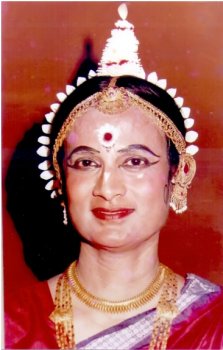 In a chat with SNA awardee Dr. Priyambada Mohanty Hejmadi (dancer/art writer/biologist and a former Vice-Chancellor of Sambalpur University) at ICCR Kolkata, the scientist cum dance aficionado shared and revealed a lot of the Odissi story which roused the interest of this reviewer. She has been awarded the Padma Shri for her biological research studies by the government of India. On the history of Odissi... With the degeneration of Maharis, Gotipua - boys dressed as girls - who trained to sing and dance, took over. Most of our present-day gurus were Gotipuas trained to dance. How did you get noticed as an Odissi dancer? While a student of Ravenshaw College (1954), I was chosen to perform Odissi at the First Inter-University Youth Festival. Odissi in those days was not a "full-evening" thing. It was more of a "one or two piece" performance. I trained under Singhari Shyama Sundar Kar in Odissi dance at Utkal Sangeet Samaj in Cuttack. My first performance was an experience in itself. Singhari insisted that I wear a 14-yard sari with a kachha in traditional style. My make-up would make any performer revolt today. Singhari said, with a commanding voice, that it was the customary make-up of Maharis. In a bowl of sandalwood paste, he dipped his fingers and made designs on my face and forehead. Mercifully, I was allowed to wear my mother's golden jewellery for the head, plus silver jewellery for the hands, arms and waist. Singhari always wore a regal turban while playing the pakhawaj! After one such performance in 1951, the late M. Asaf Ali, the then Governor of Orissa, bestowed upon me a reward of Rs.50, which was then, quite a sum. When I was selected to compete in the Delhi Youth Festival, I went to Kavichandra Kalicharan Patnaik, who was an institution by himself. Known as the Father of Modern Drama, he was also a vidwan of dance and music. He polished my dance to enable me to present a good impression of Odissi. He even composed a song for my abhinaya. Guru Debaprasad Das and I used to go to him every afternoon for over a month when my dance was polished over and over again. 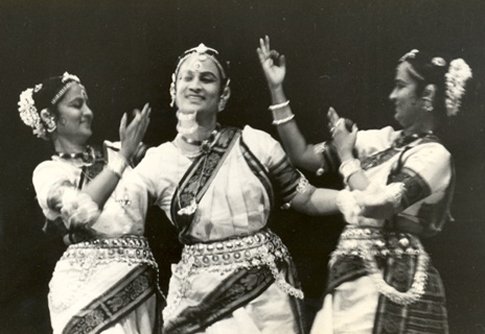 Photo: Avinash Pasricha 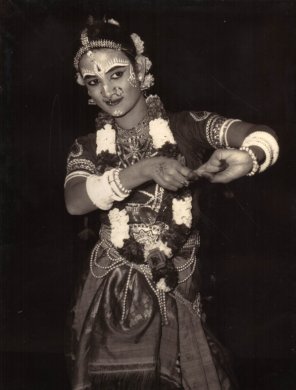 Photo: Biraja Patnaik (1955) In Delhi, people were curious to know about this unheard of form. This was rather uncomfortable. I went on the stage dressed in traditional style, with a kachha, the aanchal of the sari pinned to my blouse. The costume was a black velvet blouse, with zari trimmings and a white Cuttacki sari, with a black border. My dance received thunderous applause and indeed it was an epoch making event. I emerged a seasoned performer. Dhiren Pattnaik, an authority on Odissi dance, and the newscaster Jatin Das, were elated at the success of the presentation. The performance interested dance lovers which included Dr. Charles Fabri, who wrote about it glowingly in the Statesman. He used to refer to my performance as the discovery of Odissi dance outside Odisha. As my style of dancing - Odissi - was not an officially recognized form of classical dance, the organizers cogitated about whether to give a prize or not. Habib Sahab who was Indrani Rahman's husband, was present there. I was awarded the third prize for this. Dhirendranath Pattnaik, who also danced Dashavatar at the 1954 Youth Festival, started research on Odissi under a grant from the State Government. We were again invited to participate in the National Dance Festival in New Delhi. Under the dynamic leadership of the executive committee members of the Utkal Nritya Sangeeta Natyakala Parishad, Guru Kelucharan Mohapatra and Guru Pankaj Charan Das choreographed dance pieces under the supervision of Kavichandra Kalicharan Patnaik. Kalicharan composed a Ganesh Vandana - Padabande Gananatha for my Mangalacharan which has become a traditional piece over the last 24 years. What popularized Odissi? In 1957, Indrani Rahman came to Odisha to learn Odissi and give lecture demonstrations with Guru Debaprasad Das at the national and international level. Under constant encouragement from Dr. Charles Fabri and Dr. Mayadhar Mansingh, I gathered enough courage to give a full evening's program at Sapru House in Delhi on October 14-15, 1961. Mrs. Indira Gandhi, who was present there, was in high praise of Odissi. The Little Theatre Group, under the guidance of Inder Lall Das, had invited me to perform at the request of Dr. Fabri. I must admit that filling in an evening's program was quite a challenge for me. I chose four traditional Oriya songs, including one each from Banamali, Kavisurya and Gopalkrushna and three pieces from the Gita Govinda. (The late Pandit Banambar Acharya translated Gita Govinda to Oriya and late Dr. Mayadhar Mansingh translated them into English). Guru Kelucharan Mohapatra choreographed the dances and Balakrishna Das set the music to the new pieces. Flautist Raghunath Seth and violinist Arun Kumar Choudhury provided the accompaniment. My performance at Sapru House was of historical importance, as it marked the beginning of Odissi as a classical dance form. What was your growth in Odissi after this? A fellowship to pursue my interests in Zoology lured me away in 1963 to the US where I continued to perform and teach Odissi till my return to India. 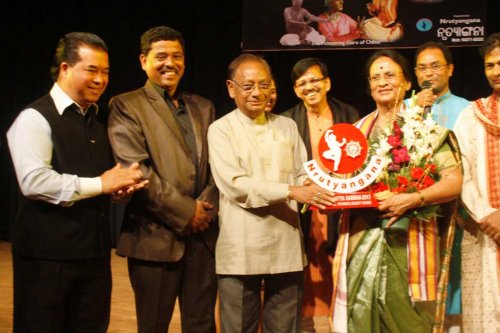 Felicitation by Dr. Giridhari Gomango, former Chief Minister of Odisha 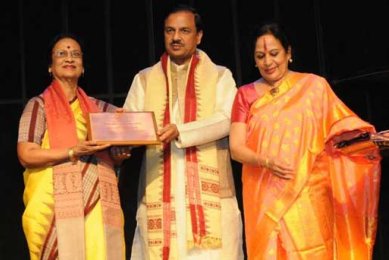 Jiwan Pani Award - Dr. Priyambada, Minister of Culture Dr. Mahesh Sharma, Dr. Sonal Mansingh Since you are still an active member in the cultural field, what are your present activities to enrich Odissi? I am involved in writing essays and articles on Odissi and other related subjects. My articles on art and culture in English and Odia spanning over three decades is being compiled for publication by the end of this year. My book on Odissi dance written with my daughter Ahalya published by Aryan International, is in its third edition. Recently, my book Gotipuas-the Boy Dancers of Odisha published by Aryan International was released in a glittering ceremony by Kri Foundation in Habitat Centre, Delhi, on 18th February 2017. Dr. Sonal Mansingh was the chief guest and cultural glitterati including dancers, critics and intellectuals were part of the audience. After the introduction by Dr. Arshiya Sethi, the founding member of Kri Foundation, I elaborated on the establishment of Gotipua system where boys of tender age were trained in the art of dancing and singing like the Maharis (devadasis of Jagannath temple in Odisha) and started performing in festivals. I gave a power point presentation for the benefit of the audience about the contents of the book including the two important festivals, Chandan Jatra in Baisakh and Jhulan Jatra in Shravan where Gotipuas performed. This was followed by a documentary on me highlighting my contributions in three fields; the revival of Odissi dance, my profession as a zoologist for which I was awarded a Padma Shri and my contribution to the establishment of the Regional Museum of Natural History in Bhubaneswar. 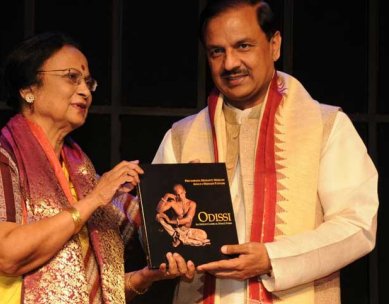 How was it taken by the audience? I took questions from the audience who were curious about the early days of Odissi and my historic dance in 1954 Youth Festival which led to the discovery of Odissi. The book was released by Dr. Sonal Mansingh and offered to Leela Venkataraman, Lalit Mansingh, Madhavi Mudgal and the noted Odia scholar Dr. Debiprasanna Patnaik. How far is the Gotipua's influence still on present Odissi according to you? Gotipua tradition is a rich part of our cultural heritage. As I put together this book, I realised for the first time that from the late 1940's to early 1950's, I not only danced items of the gotipuas but also dressed like them! It was only after this period that a margi Odissi was developed based on this tradition. Contact Dr. Priyambada Mohanty Hejmadi: mohantyhejmadi.com@gmail.com Tapati Chowdurie learnt dance for 10 years from Guru Gopinath in his dance institution Natana Niketan in Madras. For a brief period, she was with International Centre for Kathakali in New Delhi. Tapati has a Master's degree in English Literature and Bachelor's degree in Education. Presently, she is a freelance writer on the performing arts. Post your comments Unless you wish to remain anonymous, please provide your name and email id when you use the Anonymous profile in the blog to post a comment. All appropriate comments posted with name & email id in the blog will also be featured in the site. |